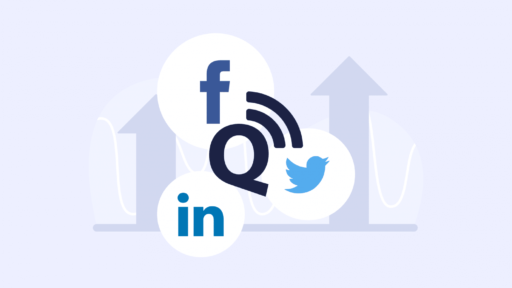Marketing KPIs might not be the most exciting thing to talk about, but they’re an essential ingredient of an effective content strategy.
People outside the marketing industry might think that creating content is just fun and easy – like being Carrie Bradshaw in Sex and the City or working behind the scenes of viral music videos.
The truth is, making content isn’t just a complex creative process; it’s hard work. The creator must have a plan, structure, calendar and objectives they want to achieve, regardless of whether it’s a personal blog or part of a corporate marketing strategy.
Creative chaos is a romanticized concept, but it’s not an effective one.
In fact, according to the 2019 B2B Content Marketing Report made by Content Marketing Institute (CMI) and MarketingProfs, the most successful content marketers are far more likely to have a documented strategy than their less successful colleagues.
Choosing the right marketing KPIs (key performance indicators) is an important step in creating an effective content strategy that will work for you, because these KPIs are what are going to guide you through the process of reaching your content marketing goals in the first place.
If you want to make sure that your content is bringing you closer to your business goals at all times, these are the top 7 KPIs that you need to be tracking.
Set your goals to find your KPIs
Your specific objectives may change over time, but no matter what, your KPIs should relate to an overarching business goal that you have.
There are dozens of articles out there with the top 10, 15 or even 25 important goals and KPIs for content marketing, but for simplicity’s sake, we can group them into 3 main categories that cover all of them: reach, engage, convert.
1. Reach your audience
The term “brand awareness” is a relatively vague concept, but let me put it this way: when you think of a coffee shop, you go straight to Starbucks, right?
That’s brand awareness.

And while your brand may never get Starbucks-level recognition, setting brand awareness as one of your primary goals is crucial during your initial content strategy process. You have to attract the right audience of potential customers in order to become successful among your competition. Your goal is to be the first brand that comes to mind when someone is looking for a service or product that you offer.
Content can help you get there.
Marketing KPIs for brand awareness:
- Article views and page views. These show how many page views a single piece of content receives, as well as the total page views for all your content pieces combined. In layman’s terms: how many times people look at your content.
- Unique visitors. This metric shows you the number of first-time visitors your content receives, and it gives you an idea of your content marketing plan’s total reach.
- Average time on site. This indicator demonstrates how long your content is read for. If this metric is really low, it means people leave your page quickly, and maybe your content is not engaging enough. After all, you want to make sure that people read through your entire piece of content before leaving, right?
Pro Tip: Keyword ranking position tells you what slot you’re currently ranking in the SERPs for your targeted keywords. It’s a critical KPI if you’re actively going after search traffic, but it doesn’t necessarily show you the direct link to your business goals; this is more of a guide to make sure that your content gets found by people. At that point, it’s your job to make sure that it’s read by them.
2. Improve engagement rates
Let’s say that you have found your target audience. Awesome!
Now it’s time to engage them with your products and services. Converting new followers into brand fans and then turning them into brand ambassadors is an excellent way to create a support system for your brand. After all, word-of-mouth (WOM) marketing is one of the most reliable strategies out there.
Marketing KPIs for engagement and activity:
- Social media actions. Yes, social media likes and shares are necessary metrics for tracking your online success. There’s a popular opinion that the “like” is not as powerful as the “share” because its conversion rates are usually lower. However, social media likes still help to spread your content organically, and with ever-evolving tracking programs on social media platforms, people can get more relevant content based on the posts they’ve previously liked. Track this metric to identify the pieces of content that resonate best with your readers. Also, when people comment on your content, it means they want to contribute to the conversation, have a strong opinion about the topic or they at least feel something about your content. Social shares is another KPI that you can use to determine your success in generating brand awareness. Social media users are careful with their feeds so if they share your piece of content it means that they are much more engaged than those who simply ‘like’, which is a rather passive action. These are the ultimate top three social media metrics to include in your social media reporting.

- Soft conversions. This is the term used when someone gives you their contact but is not yet a sales lead. For example, the number of users who signed up for a subscription to your blog, but are not yet ready to proceed to sign up for your product or book a meeting with a sales representative. These soft conversions are important to track because they indicate that people are interested in your brand thanks to your content, and have the potential to become active leads.
Pro Tip: You can increase engagement by showing your appreciation of customers – for example, by featuring their own content on your social media pages. This could boost the activity of other visitors, who’ll inevitably want to get recognition too. Just be sure to have permission when sharing user-generated content (UGC).
3. Let your content lead the way
Every site should have conversion goals to see how content influences the revenue. After all, that’s the entire point of creating great content, right?

For B2B brands, the ultimate conversion is leads or even direct sales. But only a few buyers will move from not knowing about your brand straight to buying just by reading a fantastic article. Consequently, B2B brands should track the whole buyer’s journey from lighter conversions like subscriptions or click-throughs to more in-depth conversions like offer registrations.
All these metrics show the financial impact of your content on your business. Content marketing ROI (return of investment) shows how much revenue you gained from implementing a content marketing plan in comparison to what you spent on its creation.
Marketing KPIs for calculating ROI:
- Leads reached and generated. Firstly, leads reached are the total number of existing leads touched by content. This metric shows what content is keeping your lead database aware of your brand and potentially ready for conversion. Secondly, leads generated are the number of leads that come directly from your content plan. They could be email signups, requests for more information, or other actions that you define and track as a lead. Leads generated indicate the impact that your content marketing is having on your business.
- Revenue influenced is the financial impact that your content is having on your business, down to the dollar amount. It confirms the influence and value of your content marketing plan for your overall business. It allows you to make more thought-out decisions on future investments and what your marketing strategy should look like.
Show your creativity
Setting the right goals is undoubtedly vital. Don’t be afraid to ask for help or use someone else’s ideas and turn them into something great and authentic. And remember, metrics, instruments, and trends are tremendously important, but what makes a brand stand out is its tone, voice, and ideas.
Working with content can be a complex process. You need to thoroughly understand your target audience and map out an organized content plan supported by the right KPIs. These content marketing KPIs get you off to the right start, but as your content plan evolves, and as your business needs evolve, you might find yourself adding in new ones.
All in all, think of these top 7 marketing KPIs as a roadmap that you want to be following to reach your goals. You’re the driver of the car, and they’ll help you reach where you need to go.
Do you have a favourite KPI or a tip for content marketing that hasn’t been mentioned here? We’d love to hear it!



